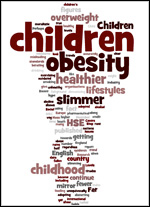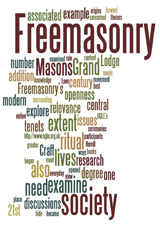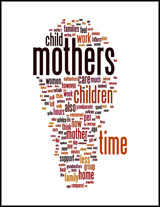Authenticity and the New Realism
"By crossing into a space whose curvature is no longer that of the real, nor that of the truth, the era of simulation is inaugurated by a liquidation of all referentials . It is no longer a question of imitation, nor duplication, nor even parody. It is a question of substituting the signs of the real for the real ."
(Baudrillard, Simulacra and Simulation)
Watching ITV's most recent and compelling atrocity, I'm a Celebrity Get Me Out of Here, one would be forgiven for buying wholeheartedly into Baudrillard's bleak perspective on our own construction and consumption of a hyper-modern non-real. Here is an entertainment which grabs more headlines than 'real' news, i.e. spontaneous rather than staged events, like wars and natural disasters, although of course the definition is blurred. And yet its sole component is the entirely contrived juxtaposition of a bunch of rather dim famous people, whose task is simply to be, to exist in front of the cameras in a bizarre parody of 'normal' reality. What is more disturbing is Baudrillard's point about the realm of pure simulacra being beyond parody, in that 'I'm a Celebrity .' is considered as newsworthy and therefore as real as an earthquake or a military coup. One is reminded of the protagonist's wife in Farenheight 451 who, when asked about the company she had entertained that evening replies "Oh, you know — the Gang", with an airy wave at the wall-encompassing TV screen.
Before completely drowning in a sea of French postmodern hyper-real angst, however, it would be healthy to note that a new movement has been heralded amongst sociologists, ecologists and even advertising companies. This is the search for authenticity, the championing of real food, culture, politics (rather than Realpolitik) and entertainment by a demographic which author David Boyle refers to as the 'New Realists'. This group is easily recognisable — they want to know where their food comes from and what is in it; they want politicians to be honest about the lies they tell and for musicians to play rather than mime; they want to speak to a person rather than a machine when they call a helpline; they seek out local produce and frequent farmers' markets as a means of revitalising community agriculture and bypassing supermarket monopolies.
The New Realists, however, also want to use the Internet and credit cards; many have a soft spot for electronically made dance music; most would like to keep hold of their cars, if only in the absence of decent public transport, and many find that monopolised supermarket produce is actually tasty and convenient after a hard day's work. The emphasis is on searching for and maintaining authenticity — the real, the local, the genuine, the hand made. But is this actually a movement, or simply boring middle class lifestyle hypocrisy?
The answer is neither. The word 'movement' suggests a group of people with definite aims and an agenda for change. The amorphous 'New Realism' is more fittingly described as a perceivable tendency in thought, action and consumption. Hypocrisy is an easy charge to level — the paradoxes in the New Realist outlook are more kindly understood as a result of consumer confusion rather than a blatant attempt to have cake and eat it. Anyone who has tried to even consider the notion of 'ethical living#, whatever that means, while also trying to get by, support themselves and have half a life will recognise the petty confusions that such lifestyle choices bring. We would all like to encourage local farming and agriculture as much as possible, but when the supermarket is open 24 hours and won't sneer at cheques for £3.60, the fortnightly farmers' market can pale in comparison. However, there is a danger that the search for authenticity can in itself become a form of elitism — when richer people eat 'rustic', wholegrain bread rather than the artificial, industrialised option, it becomes clear that much so-called authenticity can only be bought at a price. Similarly, seeing a country in a truly 'authentic' way means avoiding the cut-price package deals and family friendly tour companies that make it possible for many people to get away in the first place.
David Boyle would claim that New Realists recognise these paradoxes. As he puts it:
"It's a new kind of humanism that defends human choice against the giant corporations and the technocrats who would find it cheaper just to use machines or computers to interact with us.It's a attitude that doesn't condemn extra thick-skinned tomatoes, extra-ripe bananas , decaffeinated coffee beans — but does condemn the economic processes which mean they drive out the real stuff."
(pg 295, Authenticity: Brands, Fakes, Spin and the Lust for Real Life)
The protest, then, is not against people's own choices, but rather the lack of choice we are offered when deciding how to live, the lack of choice that makes it much more difficult to find a genuinely ethical investment fund or an independent bookshop than it is to buy into the mass-produced alternative. A lack of choice generated by the economic monopolisation of the world by multi-national interests.
Even the notion of individuality, however, is being picked up, rebranded and sold back to us by those very forces that the New Realists seek to avoid. Wander into any big name supermarket and you are sure to find a plethora of authentic 'local' produce — local as in specific to its place of origin. So there is Italian balsamic vinegar, Wensleydale cheese, Chilean wine and authentic Thai cuisine. Among such a plethora of authenticity it would seem that the real challenge would be to make genuine, plain, and in my case Scottish, food, rather than time-honoured dishes from Tuscany. And this is where the non-real real comes in. All of these products are real and to a certain extent authentic, but their mode of sale — pondered over, designed and focus-grouped within an inch of its life — negates whatever authenticity the original product would originally have had. Such a level of nit-picking is perhaps a luxury — I do not wish to complain about the ready availability of decent Chilean wine in my local supermarket. However, there is something decidedly un-real about the mass presentation of such 'authentic' foods, which warrants Boyle's definition of the non-real real.
This is the point at which New Realism descends into a mush of definitional hair-splitting. Boyle goes so far as to define organic chocolate as 'Virtual Real', Ritalin as 'Fake Real', and live yoghurt, reading groups, natural childbirth and the Tate Modern as 'Authentic'. The resemblance to the 'Up' and 'Down' columns in Sunday newspaper lifestyle supplements is too close for parody ("this week, butterflies and Beyonce Knowles are in, while silicone implants and Miu Miu are out!").
Charlene Spretnak preceded Boyle's work in heralding the 'Resurgence of the Real' in her book of the same name. She predicts, even champions a new Realism which reacts against the precepts of the modern, progressive viewpoint, and which values the local, the home-made and the quirky over the industrialised. However, Spretnak's perspective is a more radical one — coming from a holistic, environmental perspective, she calls for a radical rethink of the way in which we define humanity, let alone the places that we buy our fruit and vegetables. This realism would indeed change the world were it to gather enough support. However Spretnak's holism requires a fairly radical rejection of the individualistic idea of the self, a rejection which is unlikely to gather much support in these selfish times. Boyle's New Realism is an altogether more gentle and pragmatic concept. It remains to be seen, however, whether it can make any claims to meaning at all if advertisers are already picking up on our longing for authenticity and turning it to their own advantage.
At a time when Christian Dior make woolly hats and a vacuous celebrity's plastic breasts are headline news, the hunt for authenticity can seem a bit like a fool's crusade. And if the definition of authentic living is restricted entirely to what we buy, then it is indeed a fool's crusade to attempt to purchase our way out of a lack of lifestyle choices. New Realism could develop into a systematic and active critique of the way the world is run and the way humans regard themselves and each other. Or it could just be a pseudo-alternative fad, Sunday supplement fodder quickly overtaken by 'New Decadence' or 'New Existentialism' or 'New Old'. As to whether New Realism is authentic, the real deal — only time will tell.





